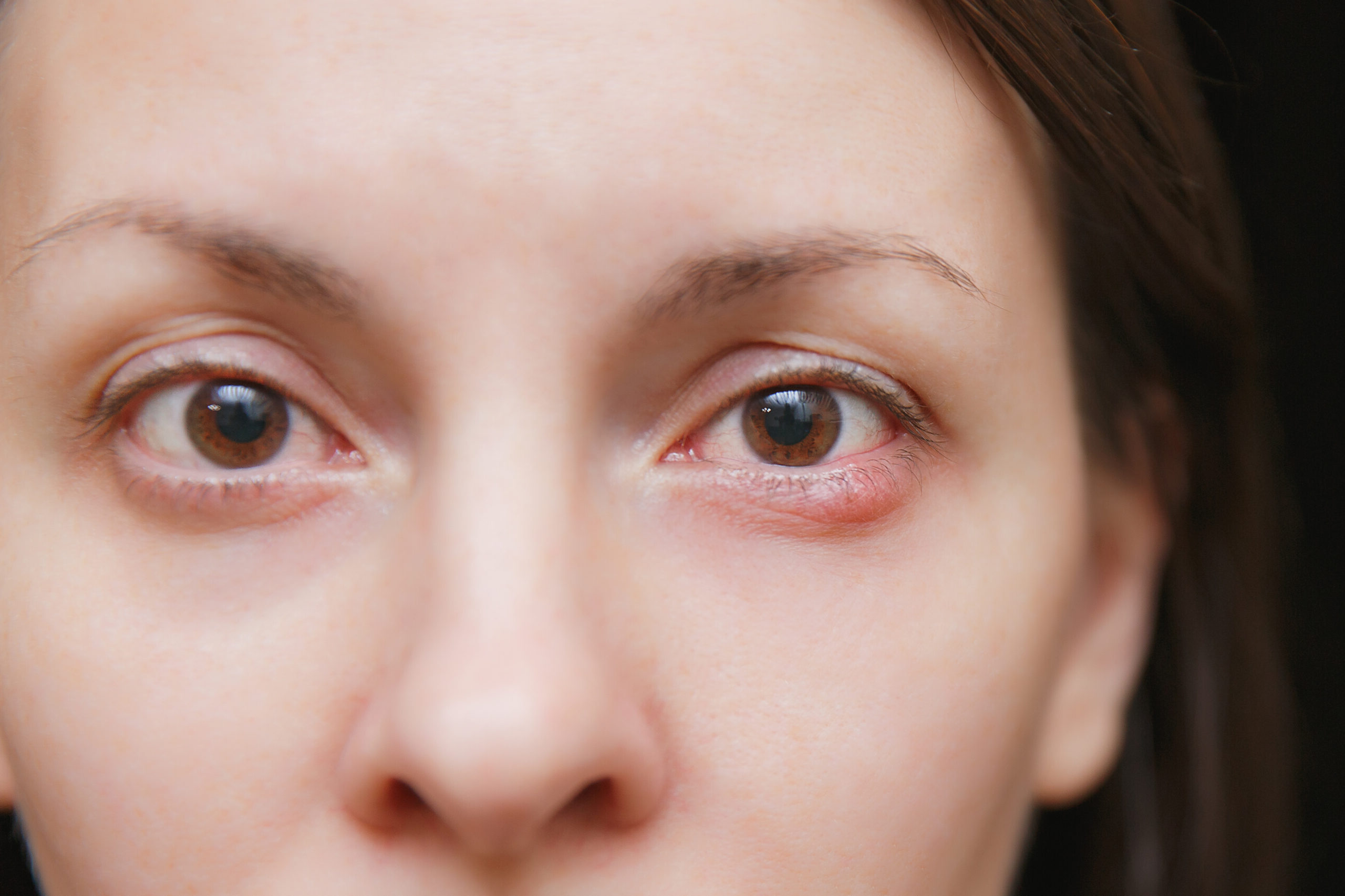Advice
5 February 2022
Advice
5 February 2022

Have you ever felt a small, painful lump on your eyelid, experienced dry eyes or noticed redness? If any of these symptoms sound familiar, you may have chalazion.
Although the term chalazion is not very well known, it’s an eye irritation that affects more and more people. But just what is chalazion? Chalazion is a small, benign, non-infectious nodule on the inner surface of the eyelid. It can occur on either the upper or lower eyelid. The cysts can vary in size and can cause discomfort or be sensitive to the touch.
Chalazion is caused by the inflammation of a meibomian gland. These glands, which are located at the base of the eyelashes, produce an oily substance called meibum. Meibum creates a protective barrier that keeps the eye wall from coming into direct contact with the air, preventing tears from evaporating. Tear production is essential for healthy eyes- they nourish, clean, protect and hydrate them.
Chalazion forms when the sebum thickens, becomes more difficult to drain, accumulates near the eyelid and eventually obstructs the gland. The irritation is a perfect opportunity for small parasites to enter the eye and trigger larger inflammations.
In general, chalazion develops slowly. It may resolve on its own in a few days, or it may take up to a few weeks or months to disappear completely.
It is important to know the difference between a stye and a chalazion. A stye is an infection that develops at the root of the eyelashes, where pus accumulates. Chalazion is a non-infectious inflammation.
According to specialists, various factors lead to inflammation of the glands, causing chalazion. Some people may have a primary glandular dysfunction that triggers recurrent irritation. For others, it might be environmental causes, allergies, or air pollution. There is also some indication that people who work on computers might be at greater risk. When your eyes are glued to a computer screen for hours, you blink less frequently, which in turn leads to dry eyes.
Rosacea is another factor. This chronic skin condition can cause ocular rosacea. The symptoms of blocked glands, inflammation of the eyes and eyelids and dry eyes are the same.
Another risk factor has been added to the list: wearing a face mask. If you wear a face mask for long periods, the accumulated heat and moisture can encourage the growth of bacteria. If you have a chronic inflammatory condition or rosacea, wearing a mask can cause chalazion to develop.
When you notice swelling, redness, or sensitivity to touch, it’s important to pay special attention. In this case, you need to maintain good eyelid hygiene to reduce the symptoms and keep the irritation under control.
Obviously, treatment depends on the progress of the chalazion. Since most chalazion disappear on their own, you have to maintain good eyelid hygiene.
Since chalazion is caused by clogged glands, the first thing to do is apply a warm water compress. A gentle eye massage several times a day will also help drain the sebum from the glands. It is also recommended that you clean your eyelids with sterile swabs, or a solution for sensitive eyes.
Nowadays, there are clinical therapies that can resolve this condition. They are considered to be more successful if performed 4 to 6 weeks after the onset of symptoms. You should visit your optometrist if the chalazion has not improved within a few days. The most effective treatment for chalazions is LLLTt (Low Level Light Therapy). If the chalazions are recurrent, LLLT can be used in combination with other treatments such as Blephex (exfoliation), IPL (intense pulse light) or Lipiflow. The optometrist will evaluate the situation and recommend appropriate solutions for the patient’s needs.
Once a chalazion is found, you should avoid squeezing or piercing the chalazion. Make sure that you wash your hands thoroughly before and after cleaning, applying compresses or massaging your eyelids.
Your optometrist will recommend routine eyelid hygiene to prevent recurrence. Regularly washing your pillowcase can help to reduce the presence of bacteria.
You should also refrain from applying makeup or wearing contact lenses until the chalazion has healed.
Make an appointment with one of our optometrists for an assessment of your eyes.